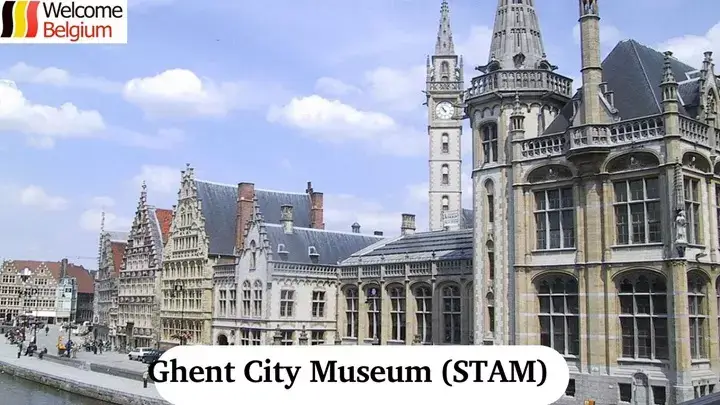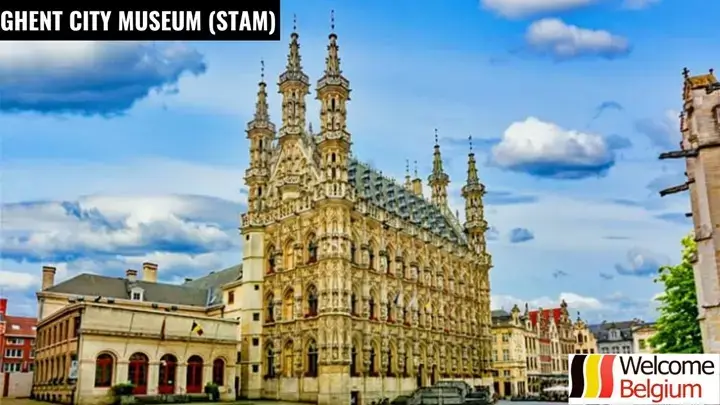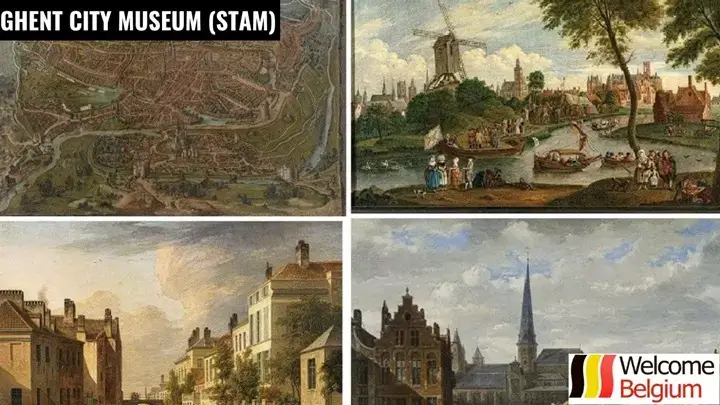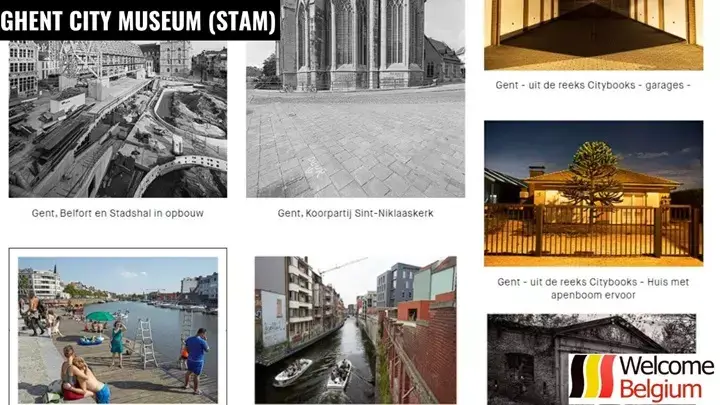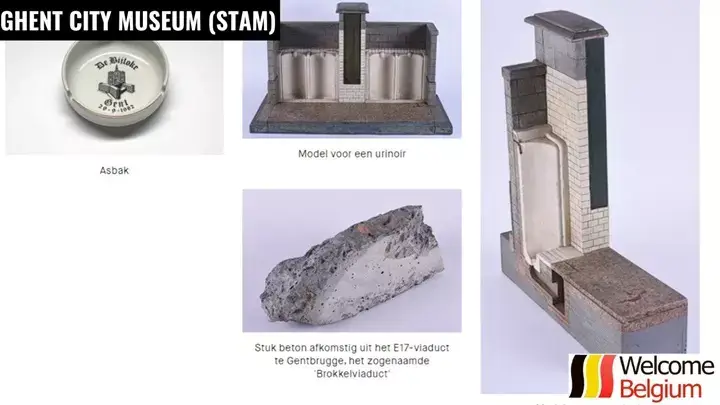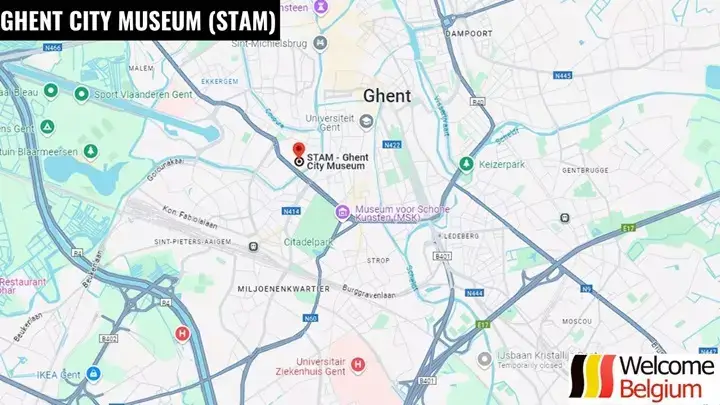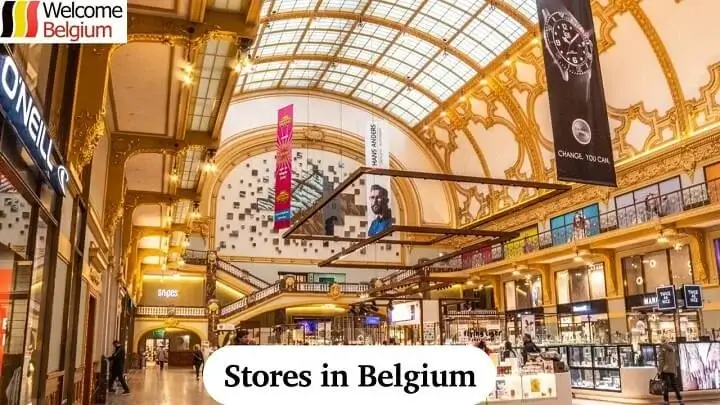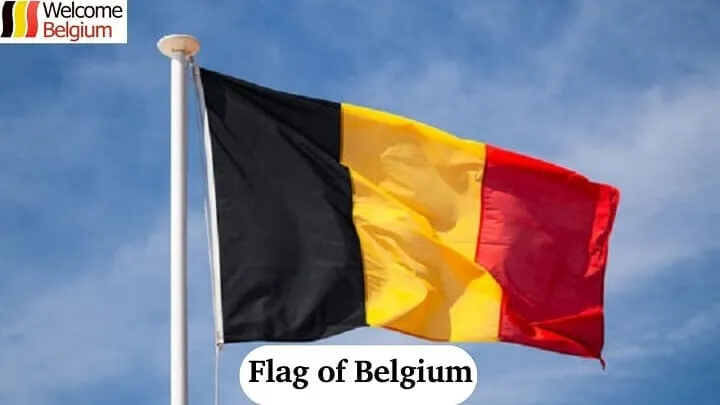How to learn the history of the city better during your vacation or trip? Of course, visit the local museum. Ghent has one of the best collections of Belgium. Entering it, you find yourself in the walls of an ancient abbey, where each room and exhibition is a small piece of the history of this city. Where should I start the story about the Ghent City Museum (STAM)? About its appearance on the territory of a modern metropolis.
History of creation
The first attempts to create a real city museum in Ghent were made in the 19th century. In 1833, the local government founded the Bijloke Museum of Art History. It was located in the old Bijloke Abbey – Bijlokemuseum. This continued until 1928, when major restoration work was carried out to expand the collections and repair the premises. In 2010, a decision was made to approve the current name Stadsmuseum Gent – STAM.
Over 180 years of building up collections of historical relics, works of art and book collections, it has become the largest in Belgium. Here you can see the following exhibits:
- Art paintings. Most of them are city landscapes. The works of Belgian and European artists are collected here.
- Photograph collection. The first exhibits date back to the mid- 19th century. Works by contemporary masters of photographic art are also presented.
- Collection of books. You can see medieval folios, truly rare printed works, as well as handwritten books with unique illustrations.
- Artifacts of the city’s trade guilds. These include receipts, business documents, and symbols of the trade guilds.
- Large collection of coins.
The collection of the Ghent City Museum STAM is constantly expanding. You can find out about new items, as well as the opening hours, and the cost of an entrance ticket on the official website of the organization – https://stamgent.be/. Additionally, they offer to study the history of creation, the names of the founders, and their biographies. This will be interesting to you before visiting.
Important: STAM may be partially closed during certain periods. This is due to restoration, renovation or inspection of collections and assemblies.
STAM Collection Overview
Why is it so important to learn more about the exhibits before visiting the Ghent City Museum STAM ? This way you can plan the best route for your exploration, choose the most interesting exhibits, and get ready. For this purpose, we offer a short overview of the main collection.
Cityscape paintings
The STAM collection consists of illustrations and sketches of the urban fabric of Ghent. They are of historical and cultural value. These works show in detail how the streets, squares, neighbourhoods and suburbs of the city have changed over the centuries, capturing unique moments in history. The Ghent City Museum is actively seeking to expand its collection by adding pictures not only of well-known places, but also of lesser-known, hidden corners of the city. This will create a more complete and diverse picture of Ghent and its history.
Interesting facts about the art gallery:
- Vinantz, Emil Claus, Engelbert are presented here. Van, Sicklers, Pierre Francois De and others.
- In STAM you can see the works Panoramic view of Ghent in 1534, The Royal execution of the Guild of St. Anthony, De Coeter in Ghent in 1763.
- The author’s works were written in the period from the 16th century to the present day.
The peculiarity of the art gallery is the constant replenishment of the fund. The administration of the city museum collects not only works of old artists, but also modern authors. Exhibitions are held here periodically, and temporary exchange of art funds with other museums and private collections is carried out.
Important: To photograph or film works of art, you must obtain additional permission.
Photo collection
During the creation of a new collection of exhibits for the opening of STAM, it was decided to create a small photo report about Ghent, its history, architecture, and the life of local residents. This task was entrusted to the photo artist Carl De Keyser. His most famous works are Kethelvest (2010) and Portus Ganda Big Jump (2009). They show the life of the city of those times, its inhabitants, and architectural features.
Over time, the collection has expanded. Now you can see the works of photographers Mark De Blich, Ives Maes, Karin Borghouts, Sanne De Wilde and Michiel Hendrix. In addition, the STAM administration offers to learn the history of the creation of each work, the author’s vision. In addition to the original works, the Ghent City Museum has the right of ownership of the negatives, which protects it from the illegal use of images by third parties.
Interesting: in the photo you can see not only the historical and natural attractions of Ghent in Belgium, but also the life of ordinary citizens.
Book about the STAM museum
In 2016, the administration of the City Museum of Ghent came up with the idea of creating not just a guidebook, but a book. It included descriptions of the main exhibits, the stories of their creation and how they ended up in the collection. The author of the work was an employee Patrick De Rinck, and the design team Dooreman & Dams worked on the design. This tome can be purchased in the STAM souvenir shop or ordered on the official website of the City Museum of Ghent.
Description of exhibits in the book:
- This is a commemorative piece made in 1982 to celebrate the opening of the De Bayloque Hospital. It is now called AZ Jan Palfijn.
- Model of a public urinal. It dates back to the 18th century and is a miniature model for organizing a network of public toilets in the city.
- Part of the concrete covering of the Brokkel Viaduct. This fragment is an example of an irrational approach to construction. The structure is partially destroyed, which can lead to bad consequences.
The book about the exhibits of the Ghent City Museum STAM does not contain a complete description of the collections and assemblies. Additional editions are planned, which should increase the interest of tourists and independent travelers in the public object. This was reported by the administration of the institution.
Important: the full volume of the book can only be purchased in paper form. The electronic version is not available on the museum’s official website.
History of trade and craft guilds
At the end of the 18th century, the city guilds of crafts and trade were abolished in Ghent. However, their legacy is historical relics. Beginning in the mid-19th century, the Ghent City Museum began collecting objects and artefacts left over from the unions. Thanks to intensive purchasing, the collection of guild exhibits has become the largest in STAM. You and other visitors can see a variety of household items, symbols, cutlery and other utensils bearing the coats of arms of the craft and trade guilds.
What can be seen in the museum’s collection of objects:
- A hosiery suitcase, 15th century. This case has a double handle system: two of them are used for the loops, and the other two provide fixation of the lip locks. The handle for the central lock is missing. The outer surface of the suitcase is black, and the interior is decorated in a rich red tone. Inside, on the lid, you can see an image of the Virgin Mary with the child, surrounded by the monograms JHS and MA, which gives the case a special uniqueness.
- the Minne family, Ghent, 1761 This chapel is associated with the shop of the Vleeschhouwers, which, along with the Deynout, Van Loo and Van Melle families, long played a key role in controlling the butchers’ monopoly until the end of the Old Regime (Ancien Regime).
- Torch by Ghent Garentweinders. Has many symbols of power and belonging to the guild of blacksmiths. Made probably in the mid-18th century.
This collection of the Ghent city museum STAM is rarely replenished now. The reason is that all the main exhibits were acquired in the 19th century. Private collectors have few artifacts left that relate to the city’s guilds. They are tracked down by museum specialists and purchased at the first opportunity to replenish the fund.
Interestingly, in addition to symbols and household items, the collection includes working tools that demonstrate the level of skill of the ancient masters.
Other museum collections
In addition to the main fund, the museum administration is forming additional collections of artifacts and historical items. Numismatists will be interested in looking at the ancient and rare modern coins collected in the thematic hall. Their collection is being replenished, and new items are being purchased.
In the 1950s, Dr. Adolf Spruyt (1871-1956), a native of Ghent who lived in Brussels, donated a large part of his Chinese collection to the Bijloke Museum. This collection covers a wide range of objects, including ceramics, porcelain, bronzes, furniture, textiles, paintings and lacquerware. It includes both religious and decorative objects, as well as objects that had important social significance. The collection spans artefacts from the Han Dynasty (206 BC – 220 AD) to works created between the 7th and 19th centuries.
The STAM collection contains around 300 stained glass windows of outstanding quality. Most of these works date back to the 16th century, when the art of stained glass creation reached its peak. Although some of them are on display at the museum, most of them are kept in storage.
How to get to the museum, opening hours
The Ghent City Museum is located at Godshuizenlaan 2 B-9000 Gent. You can get there by public transport, taxi or on foot if you are staying nearby. The latter option is convenient if you are also planning to visit local historical attractions. Before your trip, it is recommended to visit the official website of the Ghent City Museum STAM to find out about new exhibits and current opening hours.
Useful information for tourists and independent travelers:
- The museum is wheelchair accessible. There are special parking spaces at Godshuizenlaan, and wheelchairs can be reserved.
- How to get there. Train: Gent-Sint-Pieters station (1 km and 13 minutes walk). Tram: 1, 3 or 4 (stop Gent Bijlokehof). Bus: P4 (stop Gent Verdedigingstraat), 5 (Gent stop Blandijnberg, 9 (Gent stop) Albertbrug) or 19 (Gent stop Koning Albertbrug).
- Working hours: Monday through Friday, 9:00 a.m. to 5:00 p.m.
- Ticket price. Standard price is 11 Euro, for groups of 15 people – 9 Euro. Visitors under 19 years old can enter for free.
The museum can be reached by car. STAM is conveniently located next to the R40, making it easy to access. If you are driving on the E17/E40, follow the signs to the Gent-Centrum exit, then to Alle Richtingen. It is important to remember that Ghent has a Low Emission Zone (LEZ). The most polluting vehicles are not allowed to enter the city centre, which is delimited by the ring road.

